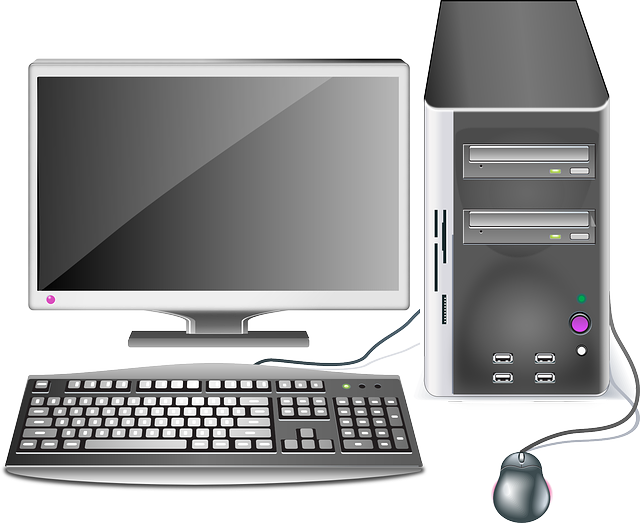Assay Kits: The Latest In Biomedical Research
Biomedical research has been a crucial area of study in the development of new diagnostic and therapeutic techniques for various diseases. To achieve this, researchers require reliable tools to measure biomolecules accurately. Assay kits have emerged as an essential tool in biomedical research, providing a practical and efficient way to analyze biological samples. These kits are designed with specific reagents that react with specific molecules within cells or tissues, making it possible to quantify their concentration.
Assay kits come in different varieties depending on the type of molecule being analyzed. For example, enzyme-linked immunosorbent assay (ELISA) is commonly used to detect proteins while polymerase chain reaction (PCR) is useful for detecting nucleic acids such as DNA or RNA. The use of these kits has revolutionized biomedical research by enabling scientists to obtain precise measurements without compromising accuracy or reproducibility. With advancements in technology, the assay kit industry continues to grow at an unprecedented rate, offering more sensitive and robust assays with increased specificity and ease of use. This article will discuss the latest developments in assay kits and their applications in biomedical research.
Understanding The Basics Of Assay Kits
Assay kits are a vital tool in biomedical research, providing researchers with the ability to detect and quantify molecules of interest within complex biological samples. These kits consist of a variety of components, including reagents for sample preparation, detection substrates, and standards or controls for calibration purposes. Assay kit protocols typically involve several steps, such as mixing the sample with specific reagents, incubation at defined temperatures and times, and measuring resulting signals using an appropriate detector.
To ensure accurate results when using assay kits, it is crucial to understand the basic principles behind them. The sensitivity and specificity of each assay depend on various factors such as the quality of samples used and optimization of experimental conditions. Moreover, different types of assays may have distinct limitations that need to be carefully considered before use. Thus, proper training on assay design and troubleshooting skills can help researchers achieve reliable data while minimizing false positives/negatives. Overall, understanding the basics of assay kits enables researchers to harness their full potential towards advancing scientific knowledge in diverse fields ranging from drug discovery to clinical diagnostics.
Types Of Assay Kits And Their Applications
Assay kits are widely used in biomedical research to quantify and qualify a wide range of biological molecules. These kits use various techniques, such as colorimetry, fluorescence, or luminescence detection methods to measure the presence or absence of specific analytes. Based on their applications and target molecules, assay kits can be classified into two categories: quantitative assays and qualitative assays.
Quantitative assays provide precise measurements of the concentration of an analyte in a sample. These types of assays are useful for monitoring disease progression, drug efficacy testing, toxicology studies, and other applications where accurate quantification is essential. Common examples of quantitative assays include ELISA (enzyme-linked immunosorbent assay), PCR (polymerase chain reaction), and HPLC (high-performance liquid chromatography). In contrast, qualitative assays detect the presence or absence of an analyte without providing any information about its quantity. Qualitative assays are commonly used for diagnostic purposes, detecting infectious agents or cancer biomarkers in patient samples. Examples of qualitative assays include lateral flow immunoassays (LFIA) and western blotting.
– Assay kits come with pre-coated plates that simplify the experimental process.
– Quantitative assays provide precise measurement results.
– Qualitative assays require minimal technical expertise but offer fast responses for diagnosis purposes.
Assay kits have revolutionized biomedical research by allowing researchers to obtain quick and reliable measurements of biological molecules. The choice between using a quantitative versus qualitative assay depends on the experimental objectives and available resources. Understanding these different types of assay kits is crucial when designing experiments aimed at studying complex biological systems.
Advancements In Assay Kit Technology
The development of assay kits has been a significant breakthrough in biomedical research, providing researchers with the ability to detect and measure specific biological molecules within complex samples. However, recent advancements have seen an increase in automation in assays, allowing for higher throughput and increased reproducibility. Automation not only saves time but also minimizes human error and reduces variability between experiments. High-throughput screening (HTS) is one example of automated assays that allow for rapid analysis of thousands of compounds simultaneously.
Another advancement in assay kit technology is miniaturization, which has revolutionized experimental design by reducing sample volumes while still maintaining high sensitivity and specificity. Miniaturizing assay kits allows for more efficient use of expensive reagents and enables multiplexing capabilities where multiple analytes can be measured from a single sample. Moreover, these smaller volume reactions are environmentally friendly as they require less waste disposal without compromising data quality.
In summary, technological advancements have transformed the field of assay kit development by introducing automation and miniaturization technologies that provide faster results with enhanced precision, accuracy, and cost-effectiveness. These changes will continue to shape future developments in this field as researchers strive to improve their understanding of complex biological systems through innovative approaches.
Benefits Of Using Assay Kits In Biomedical Research
Assay kits have become the preferred method for biomedical research due to their numerous benefits. One of the most significant advantages is cost effectiveness. Assay kits are designed to be used in high-throughput screening, which means that they can analyze a large number of samples at once. This reduces the amount of time and resources required for each experiment, ultimately leading to lower costs.
Another benefit of using assay kits is reproducibility. These kits come with pre-validated protocols that ensure consistent results across multiple experiments. The standardized protocols eliminate variations caused by human error or differences in experimental setup, resulting in more accurate and reliable data. This also makes it easier for researchers to compare results from different labs or studies.
Overall, assay kits offer several advantages over traditional methods in biomedical research, including cost effectiveness and reproducibility. By utilizing these kits, researchers can save time and resources while obtaining more accurate and reliable data. As such, their use has become increasingly widespread within the scientific community as a standard tool for experimentation.
Future Directions In Assay Kit Development
Assay kits have become a critical tool in biomedical research, providing researchers with the ability to detect and quantify specific molecules within complex biological samples. However, as technology continues to advance at an unprecedented rate, exciting developments are emerging in the field of assay kit development that will further enhance their capabilities.
One metaphor for future directions in assay kit development is the creation of microfluidic platforms – tiny channels etched into chips that allow small volumes of fluid to be manipulated and analyzed with high precision. These platforms could revolutionize how researchers perform assays by enabling them to rapidly analyze large numbers of samples simultaneously, reducing costs and increasing efficiency. Additionally, these systems may enable personalized medicine applications where patient-derived cells can be used to identify optimal drug treatments or predict disease progression on an individual basis.
– The use of machine learning algorithms to improve assay data analysis
– Development of multiplexed assays capable of measuring multiple targets simultaneously
– Integration with other technologies such as CRISPR-Cas9 gene editing
– Utilizing nanomaterials for improved signal detection sensitivity
– Deployment of point-of-care assays for rapid diagnosis and treatment monitoring
As we move forward into this new era of biotechnology, it is clear that there are many exciting opportunities ahead for assay kit development. With continued investment in innovative research and cutting-edge technologies like microfluidic platforms and personalized medicine applications, we can expect even more significant advancements in the years to come.
Conclusion
Assay kits are a valuable tool in biomedical research, offering reliable and accurate results for researchers. The reagents in assay kits typically have an expiration date, making it important to keep track of their shelf life. While assay kits can be used in the field, they may be better suited to laboratory settings where the necessary equipment is readily available.
One advantage of using assay kits is the ability to detect multiple targets within a single sample. Compared to traditional laboratory methods, assay kits provide comparable accuracy and reliability while also saving time and resources. It’s essential to handle and dispose of assay kit materials properly due to potential safety hazards associated with some reagents.
Overall, assay kits offer significant benefits for researchers looking to streamline their workflows without compromising on quality or accuracy. By following proper safety protocols and keeping track of reagent expiration dates, scientists can continue to rely on these tools as a critical component of their biomedical research projects.


